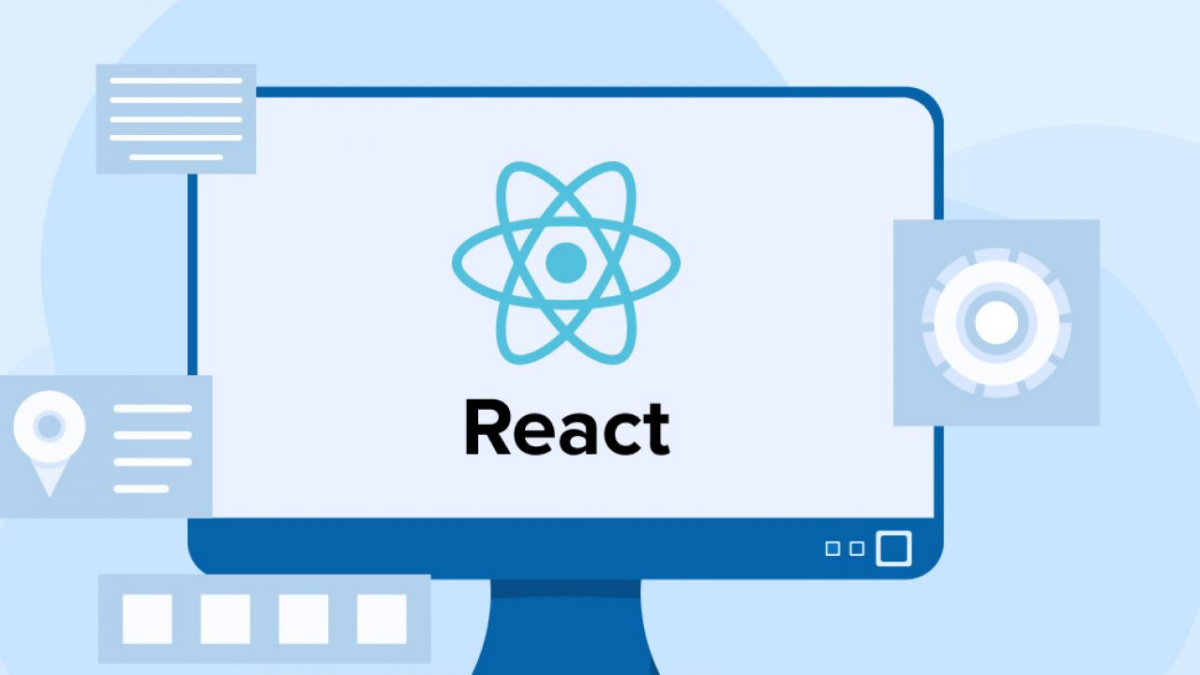React is now a popular web development JS framework. Facebook developed React, an open-source front-end JavaScript framework for creating engaging and functional user interfaces. Our next piece will explain why we use React in web development. We will also learn about the benefits of using React describe what React is, and explain why it might be advantageous for your business to search for a React JS developer or to cooperate with a React JS development company.
What is React?
React is a UI library built in JavaScript. This is particularly important in applications with a single page where data is often refreshed. It allows developers to develop large-scale web applications capable of effectively updating data. The primary goal of React is that it should be fast and efficient, easily scalable and as uncomplex as possible.
React was created in 2011 by a software engineer at Facebook who is named Jordan Walke. Facebook developed it, and it was initially used internally. It was released for public use in 2013. Since then, React has emerged into the mainstream, and strong brands like Netflix, Airbnb, and Instagram use React to build their web apps.
Benefits of Using React
Flexibility and Modularity
React is highly flexible or, should I say, highly versatile. Unlike a framework, it is simply a library, which means it offers components for the application’s architecture instead. This modularity means that React can be taken and easily blended into an existing project, or a new project can be made flexibly.
Enhanced Developer Experience
React is so special to developers because of its simplicity and the productivity boosts they get from coding. The API for React can be simple and, thereby, easy for the user to master. Reusable components make productivity high and code maintainability excellent. The concept of components allows developers to construct recurring small pieces that can be used to construct large and complicated interfaces.
Facebook’s Support and Resources
React is, however, incredibly popular and supported by Facebook, which indicates its sustainability and constant development. Facebook has a team that manages and develops React, so you get frequent updates with bug fixes, improvements, and new features. Overall, such strong support from a leading IT firm offers a competitive edge.
Broader Community Support
It states that React has a huge community where developers share new information and contribute to its development. This means there are a lot of resources, libraries, and tools available to React developers in the community. Whether it is finding a solution to some query or just seeking information about some of the recommended practices, there is a lot of support from many people.
Superior Performance
React uses a virtual DOM to improve the method of updating the DOM, which stands for Document Object Model. This way, the number of operations affecting the actual Document Object Model is reduced, thus enhancing the interface’s speed and interactivity. This is particularly relevant for frequently used applications or containing large amounts of user input or data.
Easy Testing
Testing React applications is straightforward. Another advantage of using React is that it is quite easy to test components on a one-to-one basis. To this end, Jest and Enzyme are testing tools designed to enable the developer to perform tests with little or no configurations.
Key Features of React

Virtual DOM
The virtual DOM is considered one of the revolutionary features of React. It produces a shadow copy of the real DOM tree, which helps React update only the DOM’s changed components. This approach makes updates happen quicker, thus improving the application’s performance.
JSX
The JSX syntax extension enables developers to write HTML tags directly in JavaScript. Web developers utilize HTML and JavaScript to write more readable code, which speeds up development and reduces errors.
Components and Reusability
One of the more crucial aspects of React is the library’s component-based design. The components can be thought of as the smallest units of UI that can be scripted and reused to create larger and more intricate interfaces. It also supports code reuse and maintainability, which is important when handling complex applications with large amounts of code.
One-Way Data Binding
React uses one-way data binding: data flow from the parent to the child components. This is good for comprehension and debugging since it offers a conceptual view of how information flows within the application.
When to Use React?
React is an excellent choice for projects that require:
- Complex User Interfaces: Even when there are many objects and a great deal of dynamic and interactive content in your application, React remains effective.
- Large-Scale Applications: Due to its principle of modular components, React allows for a seamless growth of applications over time.
- High-Performance Applications: Thanks to the virtual DOM, it is possible to update the interfaces quickly, making React ideal for high-performance applications.
- Cross-Platform Development: If you already know how React works, you can apply this knowledge to create mobile applications for iPhone and Android.
How to Hire React JS Developer?

A professional React JS developer can make a huge difference in your project and its successful outcome. Here are some tips on how to find the right developer:
- Look for Experience: Review the developer’s portfolio and look for prior React projects. It can be helpful to focus on previous successful projects similar to theirs.
- Evaluate Technical Skills: Ensure the developer can work effectively with JavaScript, HTML, CSS, and related technologies. It is helpful to know tools like Redux, Webpack, and Babel.
- Check Problem-Solving Abilities: These are common with react projects because they need unique approaches to tackle challenges. Determine how good the developer is when it comes to identifying and solving some problems.
- Communication Skills: This can be seen within group projects where good communication is vital for the smooth running of the project. Let the developer be able to explain their thoughts and easily grasp your expectations.
React JS Development Services
Opting for React JS development services can provide numerous benefits for your project:
- Professional Expertise: Development services provide experienced employees required to generate quality code and standard business approaches.
- Time Efficiency: With a specific focus, development services can work quicker, which enables you to launch your application quicker.
- Cost-Effectiveness: While using professional services takes time to complete and incurs initial costs, it helps minimize project mistakes and streamline the process in the long run.
- Comprehensive Solutions: Design and development services cover the whole process, from the concept to implementation and even the support and maintenance of the software project.
Conclusion
React is an open-source, high-performance JavaScript library for developing advanced UI components. This translates to flexibility, improved developers’ experience, and improved performance, which makes it ideal for different projects. Regardless of whether you are creating an average webpage or a high-performance application, React offers all the tools and the necessary support from the community.
You can inquire about a React JS developer or choose to work with a React JS development company to get the most out of this amazing tool. With React, you choose technology that has been actively developed and enhanced over the years, supported by the close-knit community, and has gained a powerful corporate base.
React’s flexibility, increased usability, and high-performance capabilities make it a preferred tool for web development. Thus, using React for your next project might be worthwhile to enjoy its many advantages and enhance your web development skills.






